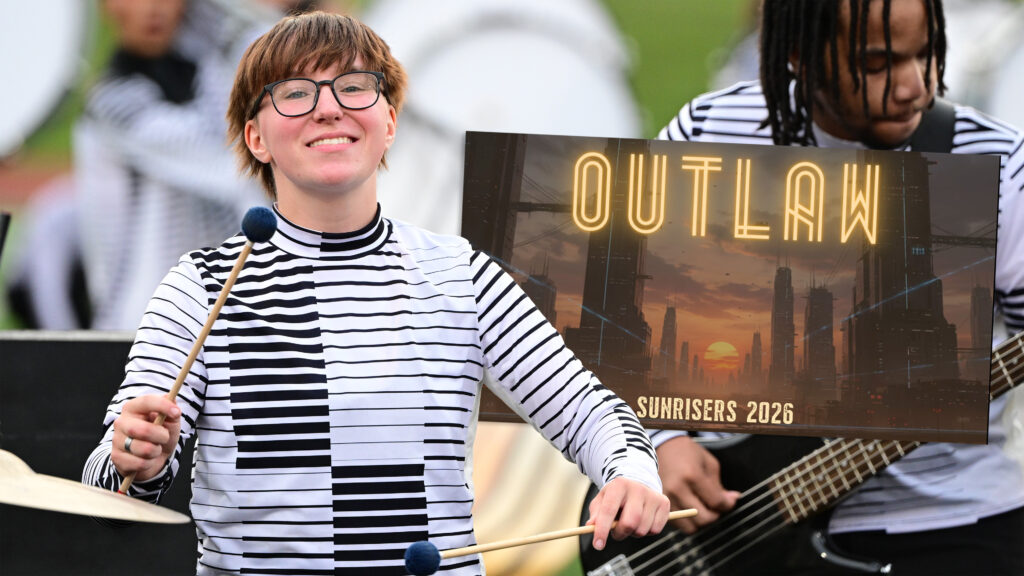It was a decision devoid of contentious debate, with a result that came much faster than expected. Yet, it was one of the biggest things to happen in several years that will affect the way the drum corps activity is structured.
On Sept. 22, 2007, at a directors’ meeting of Divisions II & III that took place outside of Chicago, a quick and unanimous vote followed an hour-long discussion. That vote resulted in a proposal that will be sent to the Drum Corps International Executive Board to combine the existing Divisions II & III into a single division named “Open Class.”
We are confident that the net result of this will be far more than just a name change. This is a first major step toward a renewal of the largest collection of corps in DCI.
-Charlie Groh, Impulse
While this proposal won’t be acted on until the Drum Corps International Executive Board meeting in November, the current corps directors of Divisions II & III have already started to speak with one voice, focused on taking their segment of the activity into the future, looking at ways to expand the marketability of the proposed Open Class and to offer better experiences to the participating corps and their members.
“The directors wish to align their corps with how the currently-named Division I corps compete. This would clarify for the public that ‘Open Class’ is essentially a mirror image of the current Division I, with the exception that the corps generally travel fewer days and have fewer members,” said David Eddleman, coordinator of Divisions II & III.
While there are exceptions to this overly simplified generalization, it is expected that this new structure will work toward dispelling the notion that Drum Corps International consists of Division I elite corps and “the others.”
Continuing with the idea of being a mirror image, the DCI World Championship Prelims for Divisions II & III would now be referred to as the Open Class Quarterfinals, the “Open Class” moniker pending approval of the Executive Board.
But why not think of the new class as simply Division II? To do so, according to the directors of Divisions II & III at the Chicago meeting, could perpetuate the perception of a vertical structure with “the elite” corps being on the top and “the other” corps being of lesser value to the activity and the members. The directors hope that this system will create a “parallel universe,” and will enable the corps to combine resources to help each other to increase the quality of their programs, regardless of membership sizes or touring profiles.
The new Open Class will truly be “open” in every sense of the word. As happens now, these corps are generally “open” to taking in any prospective member with the sincere desire to be in a corps. They would also be an “open” point of entry to any new or re-emerging corps coming on board as well; negating the need for such corps to figure out in which division they would belong. Quarterfinals (the current World Championship Prelims) will also be “open” to any corps in good standing wishing to participate.
“Additionally, it will be easier to market the corps to the general public as any implied distinction between Division II corps and Division III corps is erased,” said Eddleman. “It should be easier to create an Open Class identity in the minds of the public without having the extra category to confuse the issue.”
Under the new structure, there will be no artificial limits on corps memberships in order for each corps to fit into a specific division. It will be up to the discretion of the management of each organization to determine what they want to do and how they want to do it; including how they decide the membership numbers of their own corps.
Consolidating the efforts and aligning the thinking of all Open Class corps is expected to contribute to an increased stability throughout the class and hopefully may even contribute to the growth of the activity. Developmental topics and workshops are already on the horizon, and everyone in the room seemed to be pleased with the obvious and pervasive spirit of collegiality.
“This is an advantage to all corps and will help us promote ourselves,” said Vicki Schaffer, director of the Division II Colt Cadets and chair of the advisory committee for Divisions II & III. “We’re not worried about the number of students in each corps being dictated by the classification system. There were always ambiguities in the old system because there were a lot of gray areas about what division each corps would be in.
“This takes away any preconception that Division III corps are somehow less than Division II corps. A student does not need to feel more apt to want to join a Division II corps over a Division III corps because they can now join an Open Class corps without feeling that they are members of a lesser division.”
“This new classification extends well beyond competition,” said Charlie Groh of the Division III Impulse. “Our ability to encourage development and growth within our groups will be enhanced dramatically by the renewed commitment of everyone in the room this weekend. I am really impressed by the tone and the incredible vibe of the whole meeting. I’m pretty fired up!”
Prior to being known as Divisions II & III, the divisions were known as Class A and Class A-60, the latter having a membership cap of 60 members. While that cap was maintained through the early years of Divisions II & III, in recent years, Division III corps could have up to 79 members, blurring the classification distinctions. Those who have been around the drum corps activity since the earlier days of Drum Corps International will remember that “Open Class” used to be the name of what is presently known as Division I.
As for the potential of Division I corps directors deciding they should change the name of their division to “World Class;” it is worth noting that officially, “World Class” has been on the books used interchangeably with the Division I nomenclature for several years. In recent years, references to the class shifted mostly to Division I because of the naming of Divisions II & III.
“It’s time for us to take the ball and run with it,” said Groh. “We are confident that the net result of this will be far more than just a name change. This is a first major step toward a renewal of the largest collection of corps in Drum Corps International. The future is bright for the new Open Class, and we have a great opportunity to grow this end of the drum corps activity.”





